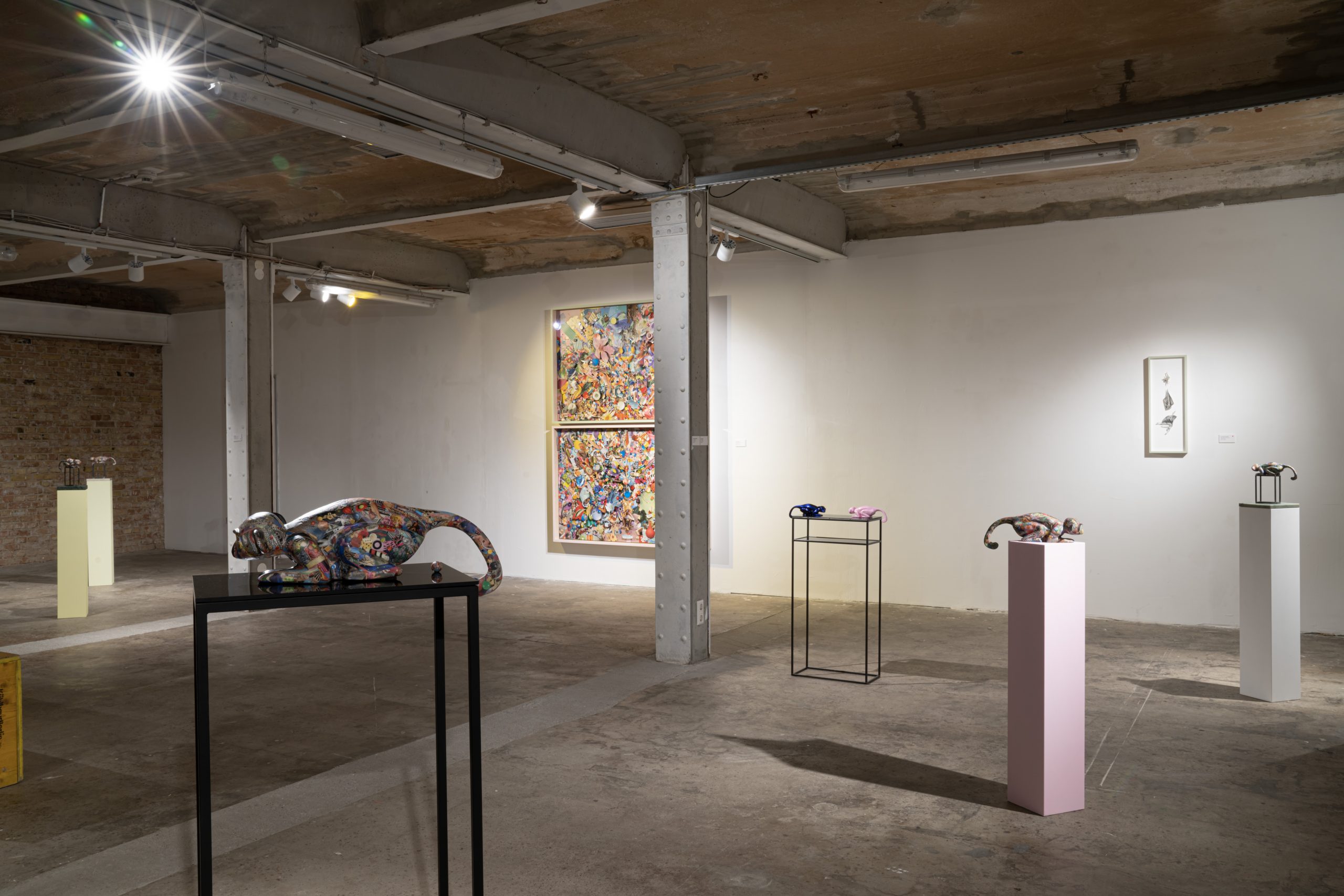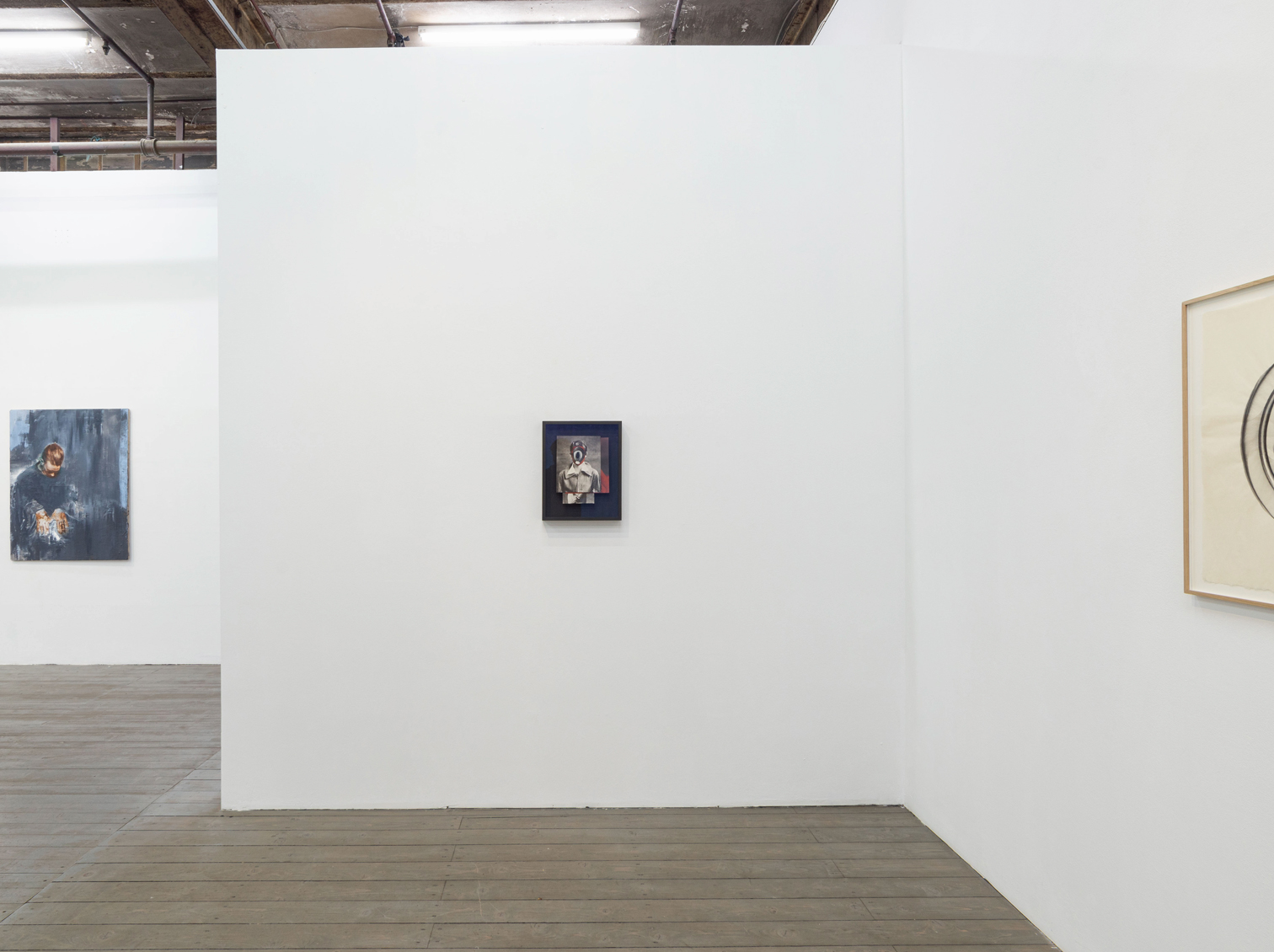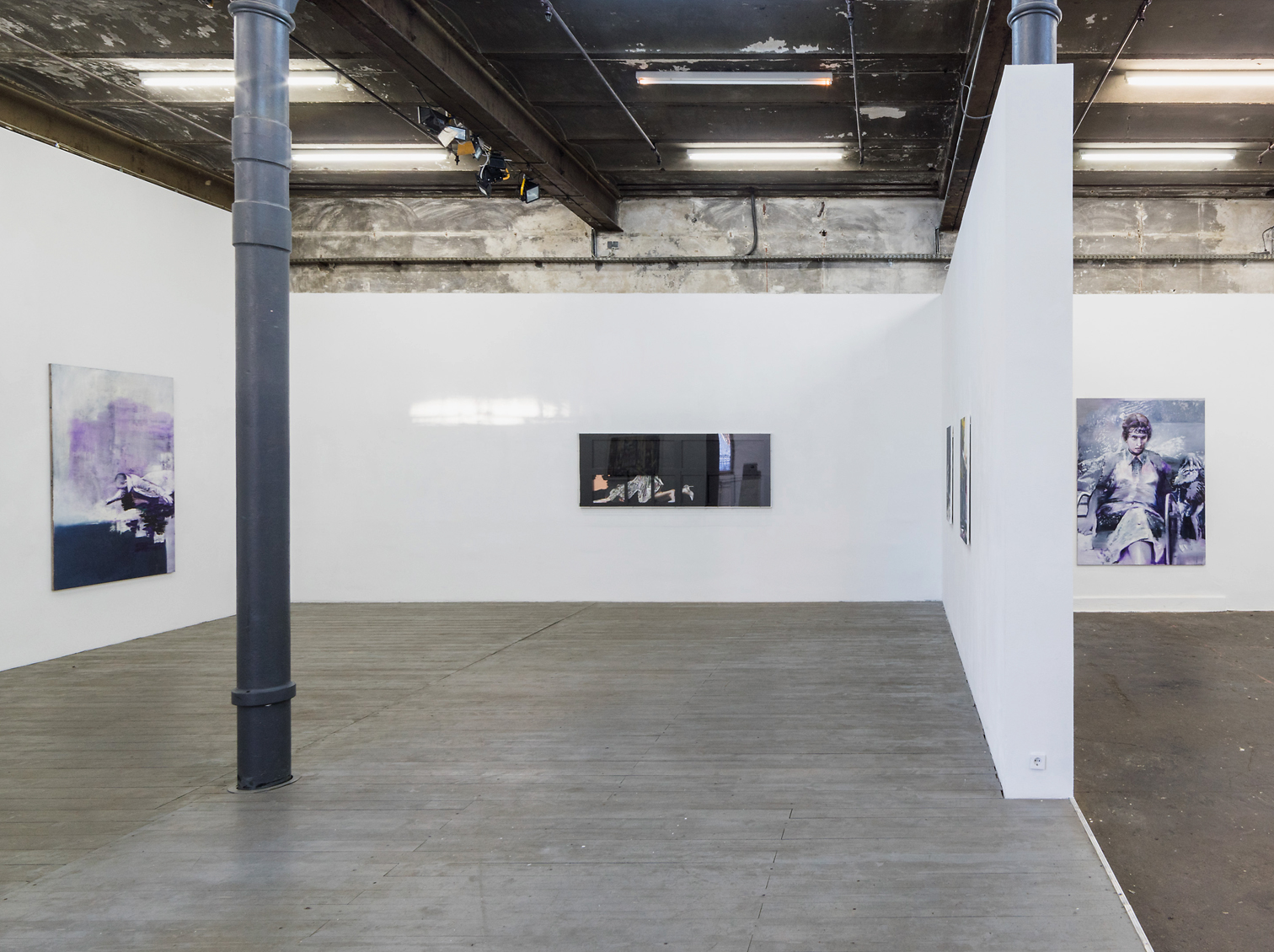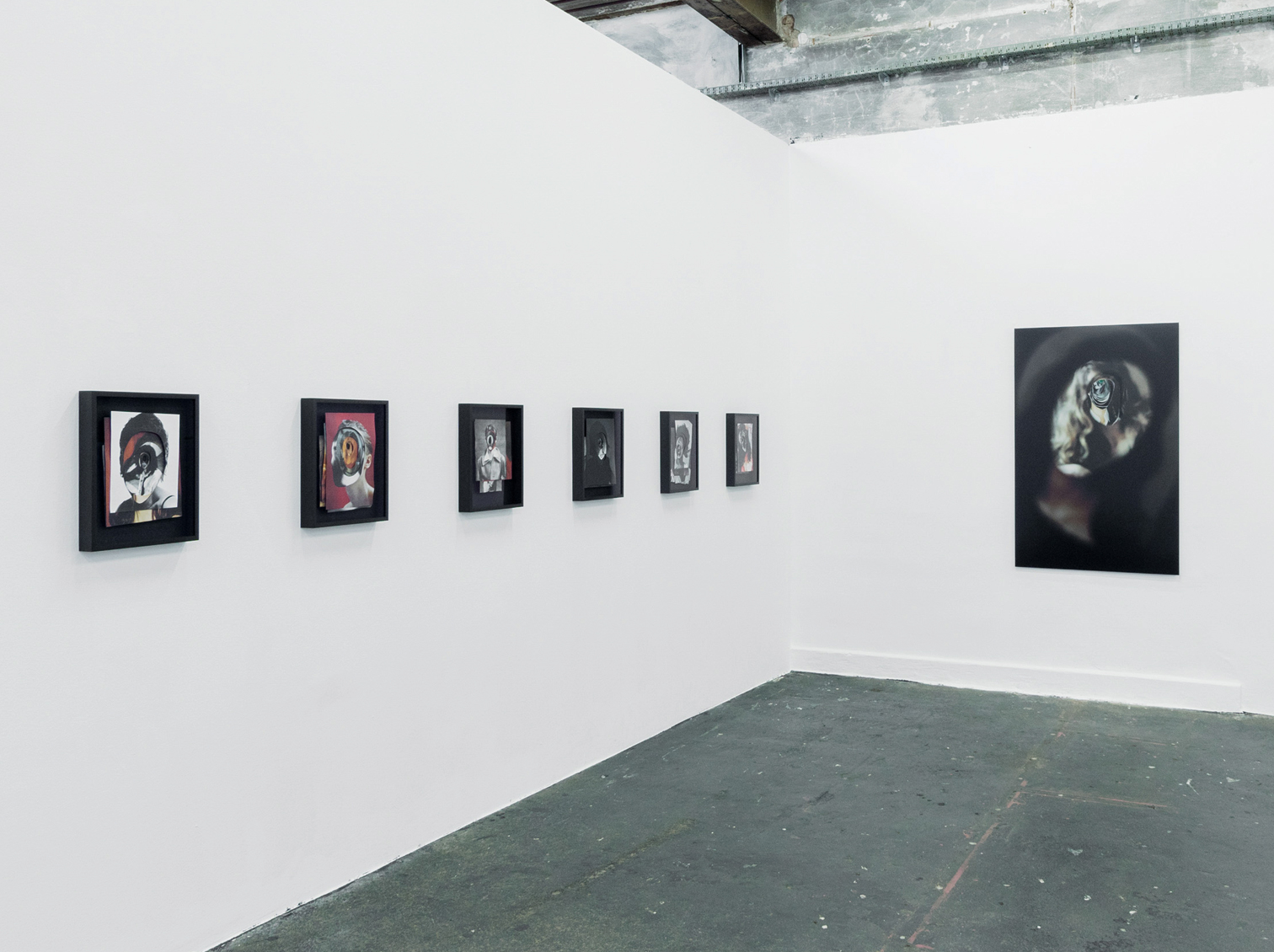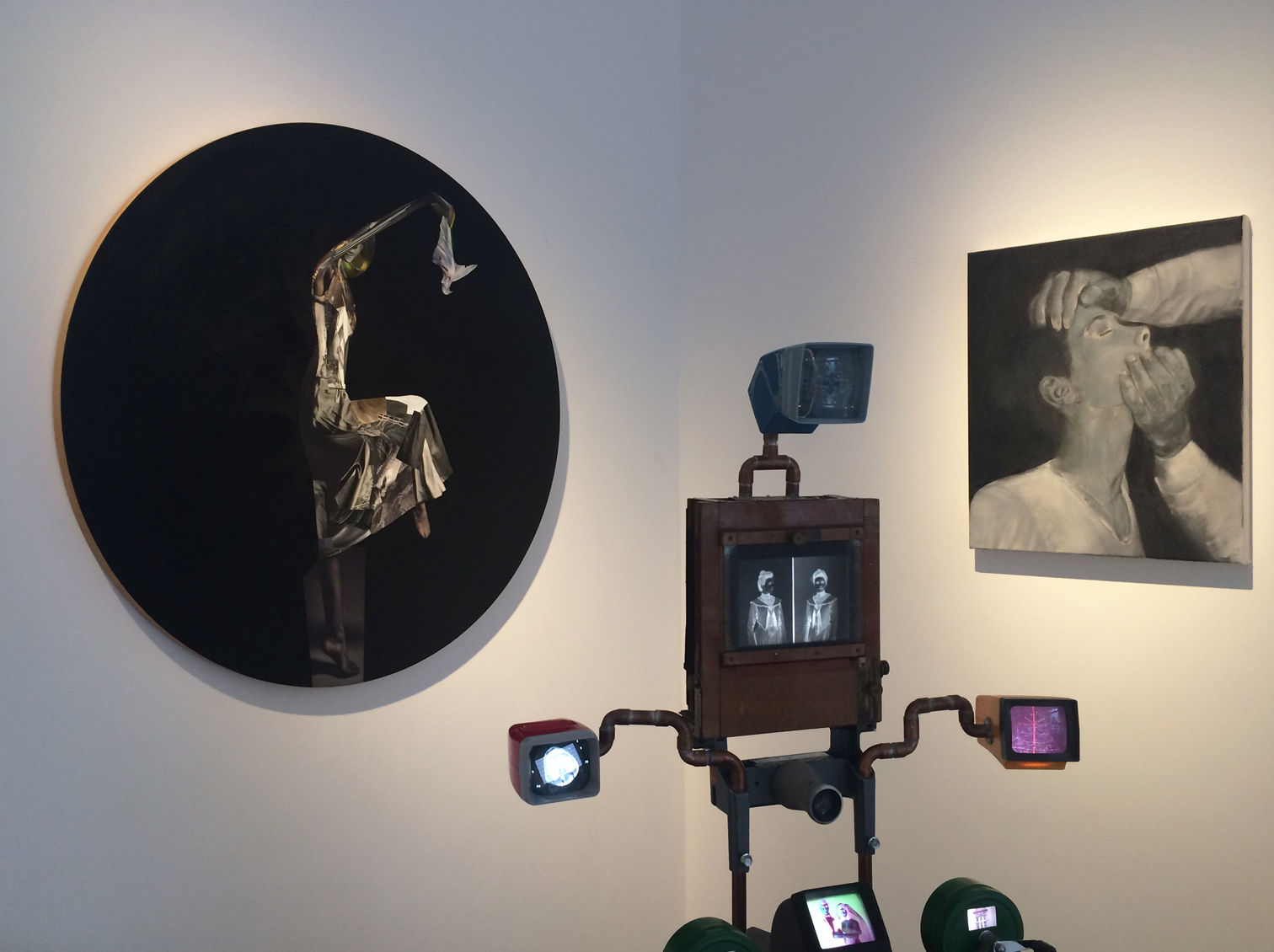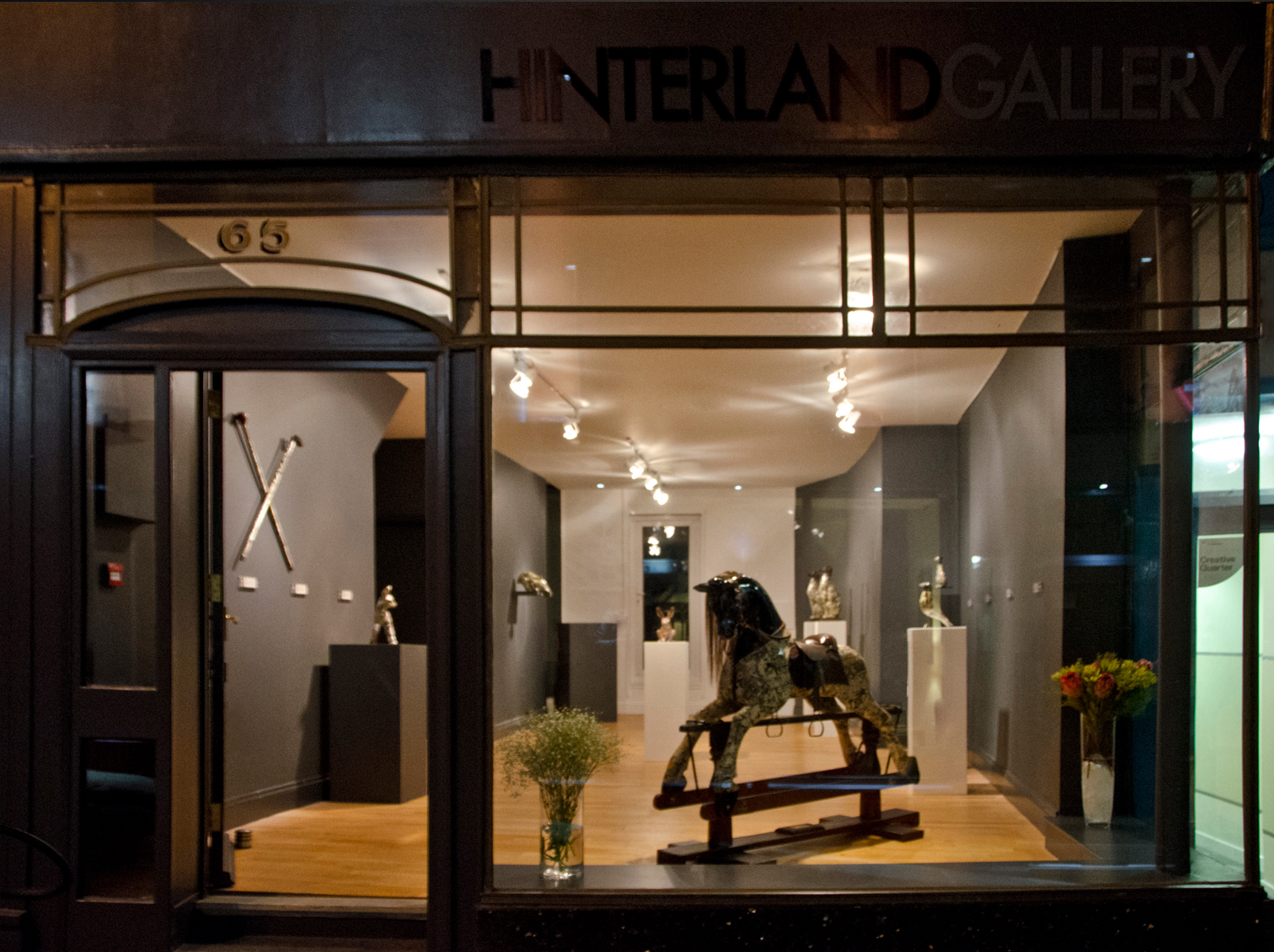Installation view/photo © Maria del Pilar Garcia Ayensa
It all started with comics. Or rather, with depictions of women’s bodies as source material for collages. Elisabeth Ehmann’s interest in representations of naked
female bodies – which, of course, have mostly been drawn by men – soon drew her to erotic comics and, eventually, hardcore porn magazines. Thanks to her sense of
humour, the artist succeeded in navigating the spectrum between the bleakly explicit photos in the sex classifieds magazine Happy Weekend and works by the draughtsman and fetish art pioneer Eric Stanton, which are seen as more artistically valuable though they’re just as explicit, while always maintaining an appreciative perspective on the female body. Though this wasn’t without consequences.
Ehmann eventually found herself confronted with existential questions between guilt and innocence, desire and consumption, fantasy and reality. These concerns stuck with her even as she started exploring animal sculptures. At first, this subject seemed quite harmless. In art, the universal task of capturing an animal’s essence in static sculpture dates back just as far as the need to ascribe symbolic value to animals. Animals are easily recognised, and people relate to them immediately. But there are also hidden depths lurking in the contemplation of an animal. The monkey in particular, so similar to humans and yet ‘other’, epitomises shortcomings in human self-awareness. This is evidenced time and again by the gap between how we perceive ourselves and how others perceive us. If we can recognise so clearly what distinguishes us from other living beings, why do we have such obvious problems when it comes to taking a clear look at ourselves?
This question is as fundamental as it is trivial. But once we take it into account, it comes as no surprise that simple, familiar, harmless elements repeatedly shift into darkness, without us being able to pinpoint exactly how it happens. We see it unfolding in Ehmann’s animal sculptures just as much as in her collages. Some of the latter span an area measuring several metres, having grown to encompass an extremely diverse array of pictorial sources. Over the years, erotic comics and pornographic magazines have been joined by all kinds of periodicals, auction and exhibition catalogues, botanical reference books, encyclopaedias… Throughout her quest for images in second-hand bookshops, flea markets, and art bookshops, Ehmann, a graphic designer by training, has gathered a wealth of knowledge about the history of mass-reproduced images – from their beginnings to the present day. She has achieved this not by reading, but by seeing. Aspects such as print quality (which has deteriorated), the feel of the paper (of utmost importance), and colouring (bright colours are rarer than dark ones) are just as relevant as the subjects depicted.
Her motifs are always selected according to how well they fit into the overall structure, regardless of their message. It is an extremely complex undertaking that usually starts with a scrap of paper and without a specific composition in mind. It grows organically, piece by piece. During this process, individual components merge to form landscape-like structures that, with the help of overlaps (kept separate by small pieces of wood), take on a spatial appearance and, from a distance, look like extreme impasto paintings. While they often appear to be abstract compositions at first glance, closer inspection allows them to unleash a magnetic pull. However, this does not make the viewer overwhelmed; it is up to the beholder to decide how deeply they want to delve.
Those who do persevere in a prolonged gaze are rewarded with illuminating insights, not only because the combination of pictorial elements reveals brief narrative scenes here and there, but because only then does the evidence of technical perfection become apparent. In Ehmann’s work, technique yields content – and more than that, technique is content. For instance, her sculptures undergo many different production stages, from the initial wire form to 3D scans and variously coated casts. The level of perfection in their execution imbues these works with an aura of the sublime and obscures the mundane realities of production. There is a monkey sculpture that looks as though it is made of porcelain, but is actually executed in high-gloss lacquered bronze. Another one appears to be made of wood, when in fact it is created using a technologically innovative lab material. From reused paper for collages to digitalised collage motifs on silk made from recycled bottles, from classic bronze casting to 3D-printed sculptures, the transition from traditional to innovative materials and techniques characterises Ehmann’s production processes just as much as its focus on sustainability; producing art that is contemporary and responds to present-day circumstances is a major concern for the artist.
Even though Elisabeth Ehmann tackles universal questions regarding art-making, her work is not easy to categorise. This poses some challenges, since the art world still likes things to be clearly defined. Conceptual art, for instance, is always good because it is more unwieldy than pleasing, whereas pleasing, possibly even ‘pretty’ art runs the risk of being labelled as devoid of content. Moreover, if you make art, you have no business dabbling in fashion, or anything that has to do with design. But Ehmann takes up this challenge. She investigates how her work can be appealing and still be perceived as art, or how far she can move away from work that is clearly defined as ‘artistic’ – for example, by having her motifs adapted by fashion designers – and still be regarded as an artist. Although aspects such as the negotiation of her role as an artist, her understanding of the concept of art, and her relationship to the art world are not turned into subjects in her works, they inform their creation indirectly. And if such works invite us to take a very close look, then why not also consider the current circumstances under which these and art as a whole are created?

